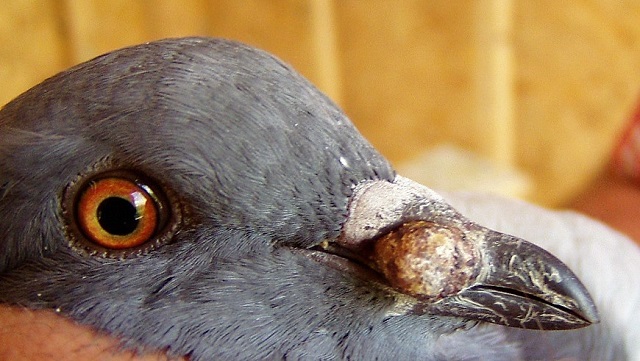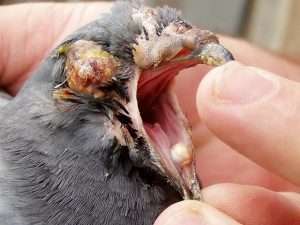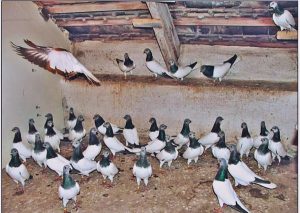Amongst pigeons pox is typically transmitted by blood-sucking arthropods, especially by mosquitoes, mites and ticks. In addition to being spread by arthropods, pox virus can be passed on via infected saliva in drinking water, via droppings or by direct contact. Spread of the virus is helped by its exceptionally high resistance, as – unlike the majority of viruses – once released from the body it can remain infectious for many years, even decades. (!)
Warning! This article contains pictures of an autopsy or disease. If you have concerns about viewing such images, please do not read this article.
Thanks to global warming, the number of arthropods in our environment increases every year, and indeed new types of insects are settling in areas with milder climates that previously only found the conditions necessary for survival in warmer climes. For this reason, we can also reasonably expect the prevalence of diseases transmitted by arthropods – like pox – to increase.
The virus attacks the epithelial cells on the surface of the skin or the mucous membrane and opens a path for other pathogens, like pyogenic bacteria, that are capable of sinking in further. Combined with the pox virus, these are capable of enough damage to lead to the bird’s death. If the virus attacks the mucous membrane of the buccal cavity, in addition to milder local symptoms, the pain of consuming feed and thereby its insufficient intake leads to the bird becoming weaker and thinner.
Although all age-groups are susceptible to the virus, it is nevertheless principally the young that are sensitive to it. The shortage of vitamin A that accompanies the infection can greatly exacerbate the symptoms that emerge.
In pigeons it is most often the dry form of pox that appears. Papilla-like growths and scabby deformations appear around the eyes, on the side of the beak, around the nostrils and on the legs. Wounds can also develop on skin covered with plumage.
In its wet form, pox starts by being as small as a grain of sand, then converging fibrous, greyish-yellow deposits appear within the buccal cavity, on the mucous membranes of the mouth and throat. In more severe variants of the wet form, swallowing and respiratory difficulties emerge, leading to weight loss, and in extreme instances to death.
Pathogens making secondary attacks, primarily pyogenic cocci, may settle on the epithelial wounds caused by the virus. Under normal conditions these are not capable of attacking healthy skin or mucous membranes, but the pox virus makes way for them to do so. Pyogenic processes develop on the skin, and/or inside the buccal cavity. These modifications can spread to the eyeballs, with a fibrous plug stopping the eye cavity, which can lead to atrophy of the eyeball.
The virus can occasionally break into the bloodstream, evoking fever, lethargy, and, within a few days, death.

If we observe skin symptoms, the correct procedure is to brush the affected areas twice a day with iodic solution. It prevents more serious, secondary purulent processes from developing, and the pigeon will release far fewer infectious viruses into the surroundings. We should follow a similar approach in the event of alterations to the mucous membrane, with the difference that the iodic solution must be diluted to five or ten times its volume.
We should not forget supplementary immune boosters and vitamins. Here it is particularly important to introduce sufficient vitamin A into the body to protect the epithelium.







